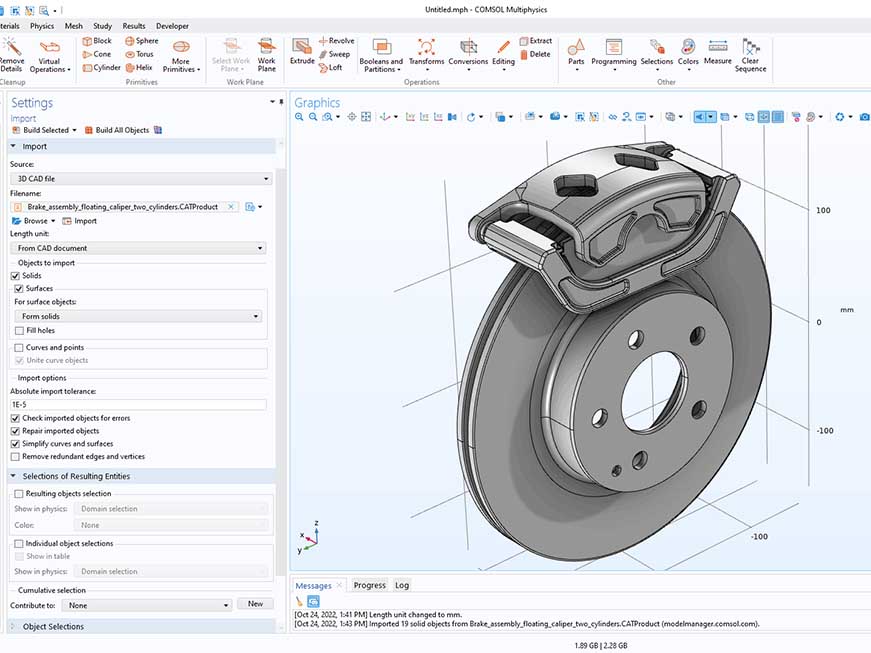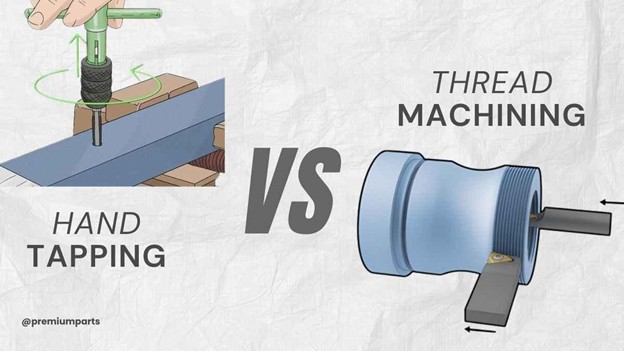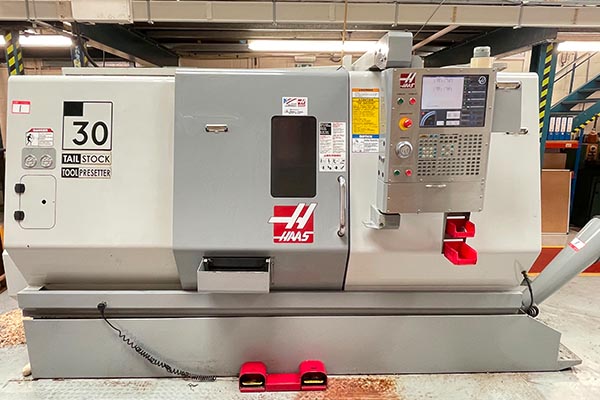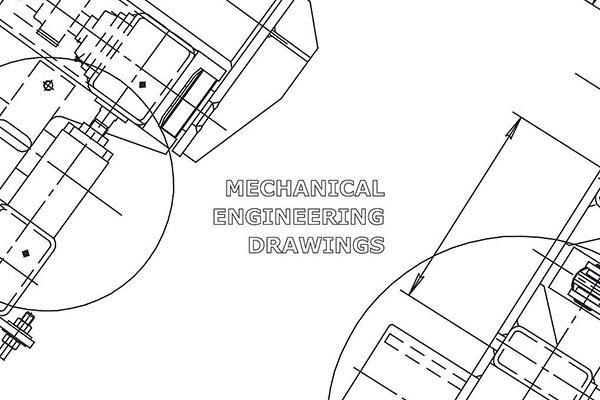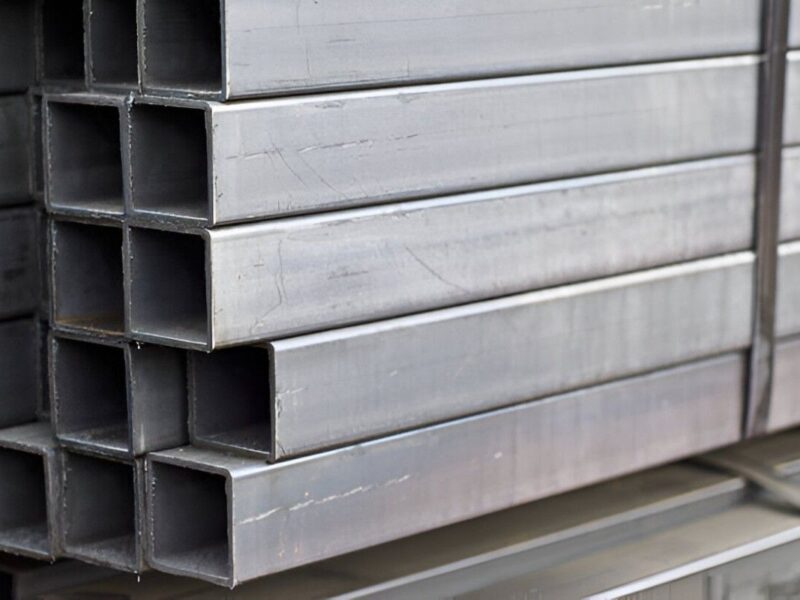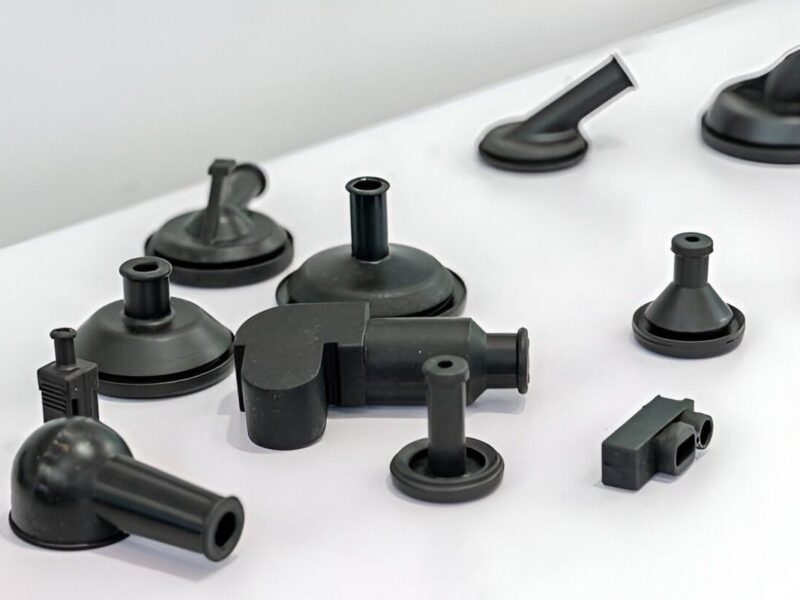In sheet metal fabrication, metal stamping vs punching is often used. These techniques seem quite similar in their terminology and are often used interchangeably, but the processes are different based on their applications. The two processes have different operational functions. Punching typically involves making holes/contours in metal sheets, while stamping is used for shaping diverse patterns on metal surfaces.
Metal stamping is an efficient process in terms of workability and scale economy. However, it’s advised to employ these processes with precise supervision, since inexperienced operators may lead to severe injury. In operation, metal stamping uses a die to press metal sheets into desired shapes and designs. The production is relatively flexible and can be used for multiple operations such as blanking, embossing, and bending.
On the other hand, metal punching uses a press that pushes the metal through the dies and removes material. It delivers efficient and economical results for creating parts with exact measurement holes, particularly when working with small production quantities.
In this article, you will learn about details on the key differences between metal stamping vs punching. Besides, we will look at several aspects of each. So, keep on reading.
What is Metal Stamping?
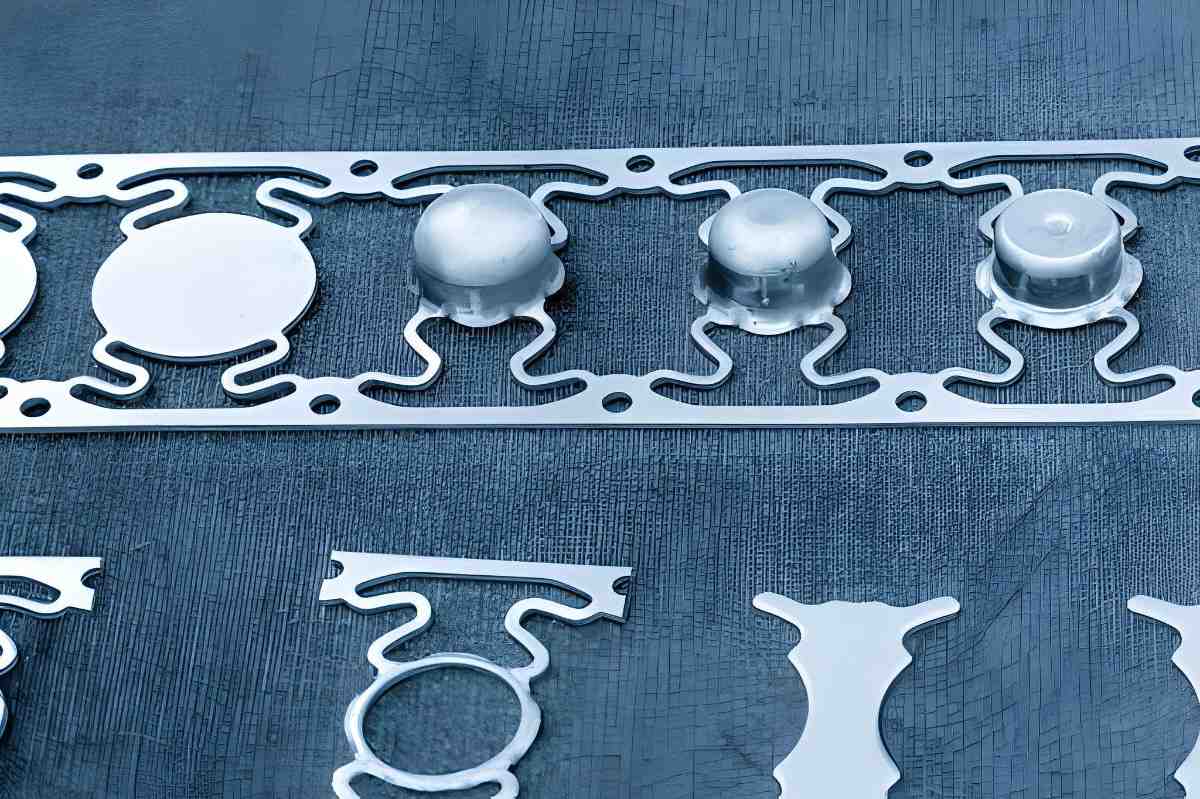 Metal Drawing Stamping
Metal Drawing Stamping
Image Description: Sample of stamping part of the metal drawing process on the progressive die in the light blue scene.
The sheet metal stamping process uses high-pressure presses or dies to carve designs on metal sheets. Manufacturers use stamping to press the sheet between dies and form a precise pattern on it. Punching and stamping are somewhat similar in function. However, the process may or may not involve cutting metal sheets.
The stamping process can include various operations, such as blanking, embossing, bending, and coining. Each operation is designed to achieve specific results, design patterns, and geometries. Moreover, it is highly efficient, capable of shaping complex parts quickly, and produces minimal material waste.
Stamp design through multiple stages or a single operation, based on design complexity. Besides, its commencement benefits manufacturers of custom automotive and aircraft parts in large volumes. Premium parts provide the optimal solutions in custom sheet metal fabrication. Whether you belong to automotive, aerospace, electronics, or consumer products, our facility is capable of meeting all your requirements. You can contact our engineers to get personalized solutions for your project!
In addition to stamping capabilities, it supports mass manufacturing to generate durable, precise components at high production speeds. You, as a machinist, can generate metal parts, including brackets and housings, while maintaining consistent strength requirements.
What Are The Advantages of Metal Stamping?
 Metal Stamping Part
Metal Stamping Part
Image Description: Sample of stamping part of the metal drawing process on the progressive die.
Metal stamping operates on various materials, including aluminum, high-strength stainless steel, and advanced alloy materials. Metal sheet stamping features several advantages. Some of the commonest are as follows:
High Speed Production Capacity
Metal stamping is designed for rapid production. It allows manufacturers to create patterns on 1000s of parts in a single cycle with minimal turnover. Therefore, the high-speed presses can perform multiple operations in one go, significantly reducing production time.
Precision and Quality
Although the stamping process is high-speed, yet provides high precision and validates high quality. Once a die is set up, each part receives identical accuracy levels. Thus, you can minimize the variations in part design and accommodate similar sizes.
Economical For Mass Production
Metal stamping is cost-effective for shaping designs as compared to other fabrication techniques. Additionally, the high initial cost to create dies becomes beneficial because the production process delivers products at lower costs on a larger scale. Scrap can be reused in production, further adding to its effectiveness.
Design and Material Flexibility
The stamping process allows you to curate intricate designs and multiple shapes. It is also flexible in parts sizes; you can even stamp the parts from 10mm x 300mm to 2,000 mm x 10,000 mm in dimensions.
What Are The Disadvantages of Metal Stamping?
Despite of benefits, metal stamping also poses a few challenges. These include:
High Initial Setup Costs
The creation of custom dies and tooling can be expensive. So, makes the initial investment significant for small production runs.
Limited to Thin Material
Metal stamping works best with thin sheets of material. Thereby, it limits its ability to handle thicker metals effectively, without requiring additional steps or equipment.
Not Ideal for Smaller Production
Sheet metal stamping is more efficient for high-production plants. In a smaller setup, the cost may exceed the cost of production.
What Is Metal Punching?
 Sheet Metal Punching
Sheet Metal Punching
Image Description: A sheet of metal is pressed by a punch tool to create clean holes/shapes.
Sheet metal punching is a hole-making technique. It shapes the contours of different shapes and sizes in the sheet metal. It usually involves a press tool die that shapes through the material. Manufacturers employ punching techniques for high-volume production. You can make holes, lots, and any required shape with bashing.
In operation, firstly, punch press tools work by inserting the metal sheet material. Generally, punching is a follow-up process that takes place after metal stamping. The ram light component activates the punch tool. Next, punch tools travel downward and punch through the material. Lastly, the cutting motion produced by the shear operation results in a precise hole.
In general, aluminum, steel, and copper sheets are right for punched parts. Besides, the processes dictate different responses according to each material type because of their distinct nature/properties. The punching process normally depends on the thickness and hardness of the sheets. Materials like aluminum are easy to punch compared to copper. If you are looking for premium quality, flawless metal punched parts/products, visit our site, Premium Parts.
In addition, manufacturers select punch sizes together with die configurations as part of their process to achieve precise outcomes. The separated part after punching the hole is known as a slug, and it is typically considered a scrape.
What Are The Benefits of Metal Punching?
Some of the common benefits of punching are mentioned below:
Punching Is Cost-Efficient for High Volumes
Metal punching delivers efficient production at a larger scale. Because it can cut parts with a minimal scrap rate. Additionally, the fast production speed reduces both labor expenses and overall manufacturing costs. Generally, it is considered more cost-effective than laser cutting.
You can Achieve Even Tighter Tolerance In Parts
Through punching operations, you can achieve exceptional precision for making holes, shaping materials, and creating different design patterns. Once you establish a die, you can precisely punch many identical parts with precise tolerances, typically up to ±0.005 inches (±0.127 mm) throughout all production runs.
Punching Is Compatible with a Range of Metals
The advanced punching machines can successfully process high-strength materials. For example, it can process steel, aluminum, and brass effectively. Besides, Metal punching makes it easy for manufacturers to work with different types of metal without needing to make major changes to their setup.
Fast Production Speed
Punching can operate at high speeds. It can produce large volumes of parts in a short timeframe. Such high-speed perks make the process ideal for industries that demand quick turnaround times for high production of parts/products.
What Are The Limitations of Metal Punching?
In fact, the process brings certain benefits for users, but it also has a few limitations. These include:
- Metal punching is highly effective for thin to medium-thickness materials ranging from 0.5mm to 6mm. It becomes less efficient when working with thicker metals, as the punch may not produce clean cuts.
- Punching technology demonstrates precision but encounters challenges when handling designs typically intricate and detailed. Complex geometries tend to involve supplementary operations and tooling solutions.
- Metal punching has a high initial cost. So, it is ideal for large-scale production. Smaller setups need to afford the cost of installation.
Comparison Between Metal Punching Vs. Stamping
The manufacturing sectors rely heavily on metal punching and metal stamping as central operations. These techniques fulfill separate manufacturing requirements. Metal punching produces holes and shapes in sheets by operating between a punch and die combination. Besides, it punches force through materials to create accurate cuts or holes in the material. In comparison, metal stamping encompasses multiple manufacturing processes. Normally, it combines punching with bending to create desired metal forms.
However, both production techniques use high-pressure equipment. But, operate at different scales and generate different outcomes. Metal punching specializes in hole making, and in contrast, metal stamping executes complex operations, including embossing, deep drawing, and cutting. Let’s get deeper into their distinct aspects:
Function
Punching is primarily used for developing holes and shapes by applying force through a punch into a die. Stamping, on the other hand, covers a wider range of operations, such as cutting, bending, embossing, and coining, using a die to shape the metal.
The main function of the stamping process is to convert the 2D metal surface into a 3D pattern by embossing with the help of dies. The sole purpose of punching is to shape holes in the metal sheets.
Tooling Complexity
Industries using metal punching generally require simpler tooling. It focuses mainly on cutting specific shapes or holes. In most cases, the punching is performed by incorporating CNC control for precise cutting. In contrast, stamping requires more complex tooling. Particularly, multi-step processes or intricate designs often need multiple dies in sequence. These include bending, flanging, coining, and blanking.
Material Thickness
Both techniques can accommodate thin sheets more effectively. The thickness of the sheet ranges from 0.5 to 6mm. Machinists employ metal sheets with thicknesses of around 0.001 to 0.625mm.
On the other side, stamping can be precisely worked on sheets with similar thicknesses up to 0.2 mm (0.008 inches) to 6 mm (0.25 inches), depending upon the machine and material type. It stamps a design on the external surface. Additionally, modern stamping machine features CNC control and offer more precision and dimensional accuracy.
Production Speed
Manufacturers use a press to punch holes in the metal sheet, similar to the way a punching machine is used to punch holes in paper. A punching hole is a single-step process, so it requires less time for the delivery of a product.
The stamping procedure is time-consuming. It involves bending, embossing, and precise alignment of tools. Additionally, the procedure is usually done under expert supervision due to the high hazards associated with it.
Design Freedom
Stamping offers greater flexibility for producing complex, multi-featured designs like embossed patterns, bends, and notches. On the other hand, punching is somehow limited to creating holes and relatively simple shapes in flat material.
Cost for Low Volumes
Small to medium production volumes of parts/products benefit from punching. Because it requires fewer setup expenses and tooling costs. Aside from this, high-volume production benefits from stamping because the initial tooling expenses become justified through the large number of products manufactured.
In addition, the punching process is comparatively cheaper. Stamping requires different machines to work in coordination to obtain the desired patterns.
Material Waste
Punching operations create substantial waste material. Because it involves shape cutting and blanking procedures. While stamping process demonstrates superior material efficiency because it generates fewer offcuts when compared to punching operations. Scrap production is minimal in stamping as compared to metal punching.
Tool Maintenance
The force required to punch holes into hard materials shortens the lifespan of punching tools. In contrast, stamping dies demonstrate longer operational life because their strong design enables them to perform multiple functions. However, both techniques require regular maintenance and die replacement to produce quality output.
Precision and Tolerances
Stamping demonstrates superior accuracy for complex designs and high tolerance requirements compared to punching. Metal punching tools deliver exact hole placement to achieve superior precision details.
Table: Summary of Differences between Metal Stamping Vs. Punching.
| Factors | Metal stamping | Metal punching |
| Material removal | No | Yes |
| Shaping | No | Yes |
| Complex designs | Yes | No |
| Precision | Yes | No |
| Affordable tooling | Yes | Yes |
| Metal thickness | 0.0036 – 0.5 inches | 0.0001 – 6 inches |
| Material waste | Low | High |
| Setup cost | 10,000$ approximately | 200-10,00$ approximately |
Meta Stamping Vs Punching: Industrial Applications
Let’s take a look at the practical uses of both techniques across different industries:
Automotive Industry
- Through stamping operations, manufacturers can create precise, strong body panels, brackets, and car frames.
- Stamping works best for making complicated parts with intricate geometries when production needs to be done at high volume.
- The automotive industry also employs metal punching to create holes that serve as spaces for fasteners, sensors, and additional components for car exteriors and interiors.
Electronics Industry
- The production of high-precision housings, connectors, and heat sinks relies on metal stamping processes.
- CNC Punching helps process drill holes through printed circuit boards (PCBs) while simultaneously manufacturing terminal components.
Aerospace Industry
- High-strength materials, like titanium, aluminum, and steel, usually undergo stamping operations to manufacture airframe structures, brackets,s, and doors.
- Metal punching services produce holes for fasteners and rivets while maintaining exact tolerances to ensure safety and structural integrity.
Summary
Sheet metal fabrication depends on metal stamping and punching, as these are core manufacturing means and help fabricate diverse parts in real-time. However, both these features have distinct benefits and limitations. So, you must carefully decide whether punching or stamping is ideal in your case. In general, stamping creates complex, precise parts at high volume rates. Punching provides economic benefits for basic shapes and hole production. Understanding the technical differences and applications is a must. Consider the material properties, size requirements, mode of product, and intricacies when considering these processes.
Premium Parts is a one-stop solution that provides any kind of facility related to metal fabrication, like bending, embossing, metal punching, and metal stamping. Whether you need to manufacture parts on a small scale or large volume, we have the right facility to meet your precise demands. Contact us right now, and get an instant quote!
FAQs
Q1. What materials does metal stamping operate with?
Multiple materials such as steel, aluminum, brass, and copper are compatible with the stamping process.
Q2 . How do metal punching operations execute their tasks at speeds comparable to stamping processes?
Metal punching tools produce quick production results for simple shapes and hole drilling. Stamping tools need extended processing times because they require complex tooling and sequential operational steps.
Q3. How does metal punching technology provide the capability to produce complex designs?
Simple and basic shapes, together with hole drilling operations, achieve optimal results through the punching process. Complex designs require additional manufacturing procedures, such as stamping operations, to reach completion.
Q4. Why do metal punching tools experience different rates of wear compared to stamping tools?
Punching tools experience accelerated wear under high-pressure conditions. In the case of stamping, the tool used maintains a longer operational life despite requiring periodic maintenance.



